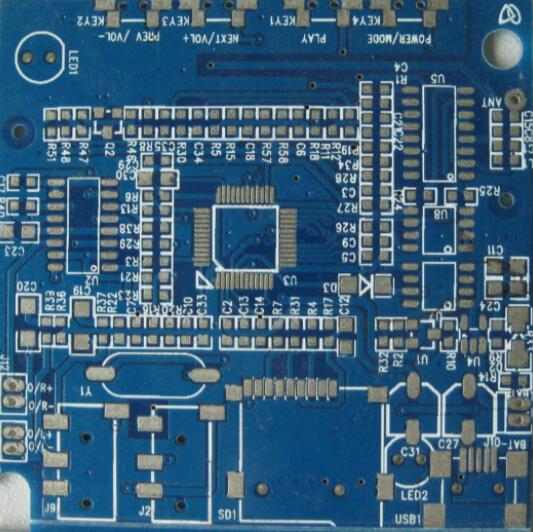The common pad processing technology of FPC has its own advantages and disadvantages.
PCB factoriesmust learn to attach importance to Internet technology and realize the practical application of automated monitoring and intelligent management in production through the integration of overall industry knowledge.
The choice of pad surface treatment process also determines the reliability of soldering. For example, nickel gold is prone to produce "black pads" which directly affect the solderability of SMT. The OSP process has high requirements for the production of FPC before SMT. The film is easily oxidized, which is fatal to SMT soldering. . For details, please refer to the research on the solderability of different surface treatments of BGA in the SMT process in the 6th issue of "Modern Surface Mount Information" in December 2012. 3. The solder mask design requirements of FPC pads.
The solder mask on the FPC (SolderMask) is similar to the "green oil" on the PCB. The difference is that the green oil on the PCB is silk-screened, and the solder mask on the FPC is made by the following two methods: This is a polyimide film as the material. The windowing system is formed by drilling and punching the die, and then pressed with the main board to form the window of the pad. The other is the same as the green oil on the PCB. No matter what kind of "windowing" method is adopted. It is necessary to ensure that the pads of the SMD/SMC device are evenly symmetrical, and the pads cannot be covered by the solder mask
Poor pads on the solder mask will reduce the solderable area of the SMT during soldering, which will lead to failure of reliability after soldering.
There are two main ways to open windows in SMD/SMC pad design: one is SMD (Solder Mask Defined) solder mask limitation, and the other is NSMD (Non-Solder Mask Defined) non-solder mask defined.

The above are the 4 windowing methods for SMD/MSC pads. Our company now uses NSMDPAD and NSMD to open the window. For these two window opening methods, the overlay film and the green oil solder mask are required to be aligned.
4. The design rationality of SMD/SMC pads affects SMT processing.
4.1. The device pad design is designed according to the customer's original window opening, and there will be defects in SMT processing.
4.2. The matching of the pads on the FPC flexible printed circuit board and the soldering feet of the SMD/SMC devices has an impact on the SMT processing and soldering.
4.2.1. The pad on the FPC flexible printed circuit board is smaller than the solder foot of the SMD/SMC device, and the SMT cannot be soldered.
4.2.2. The inner distance of the pads on the FPC flexible printed circuit board is too large. The excessive inner distance of the pads on the FPC flexible printed circuit board causes the solder feet of the SMD/SMC devices to fail to lay on the pads, which directly causes the SMT to fail to be soldered.
4.3. Whether the solder feet of the SMD/SMC device match the pads of the corresponding SMD/SMC device on the FPC.
In the design process of FPC, it is necessary to consider the matching of the solder feet of the SMD/SMC device and the corresponding SMD/SMC device on the FPC. For example, the FPC requires the mounting of 0402 devices, but the design of the pad on the FPC is in accordance with the 0603 pad specification To design. In this way, it is impossible to solder in SMT. Either replace the 0603 specification device, or adjust the pad design on the FPC